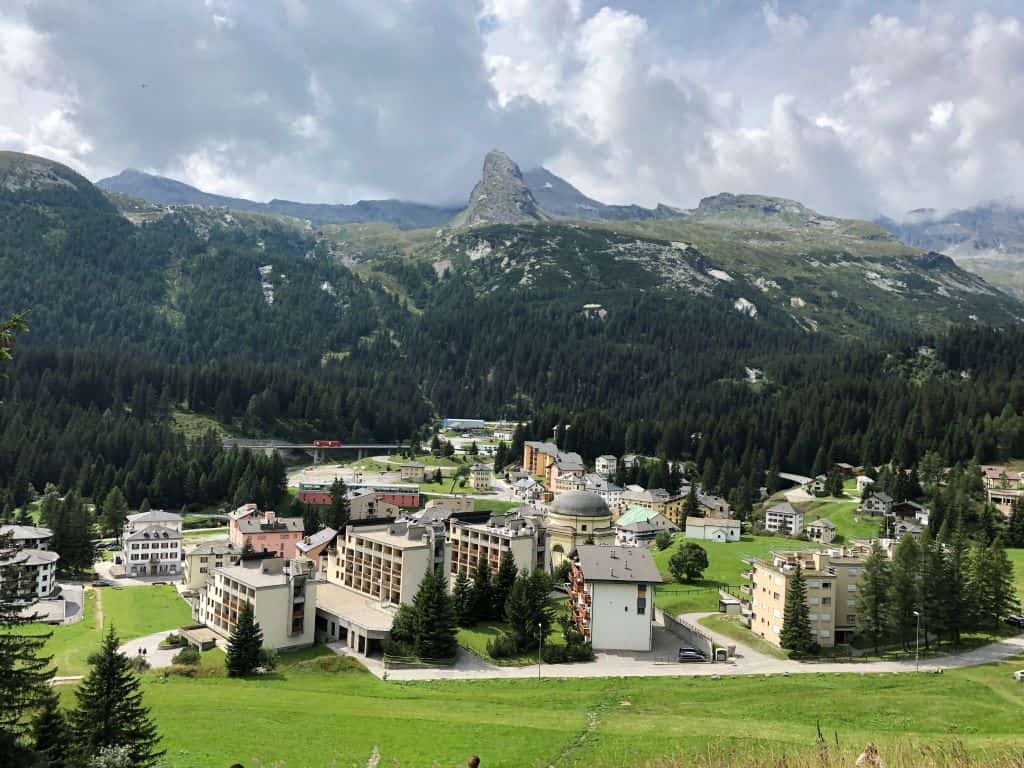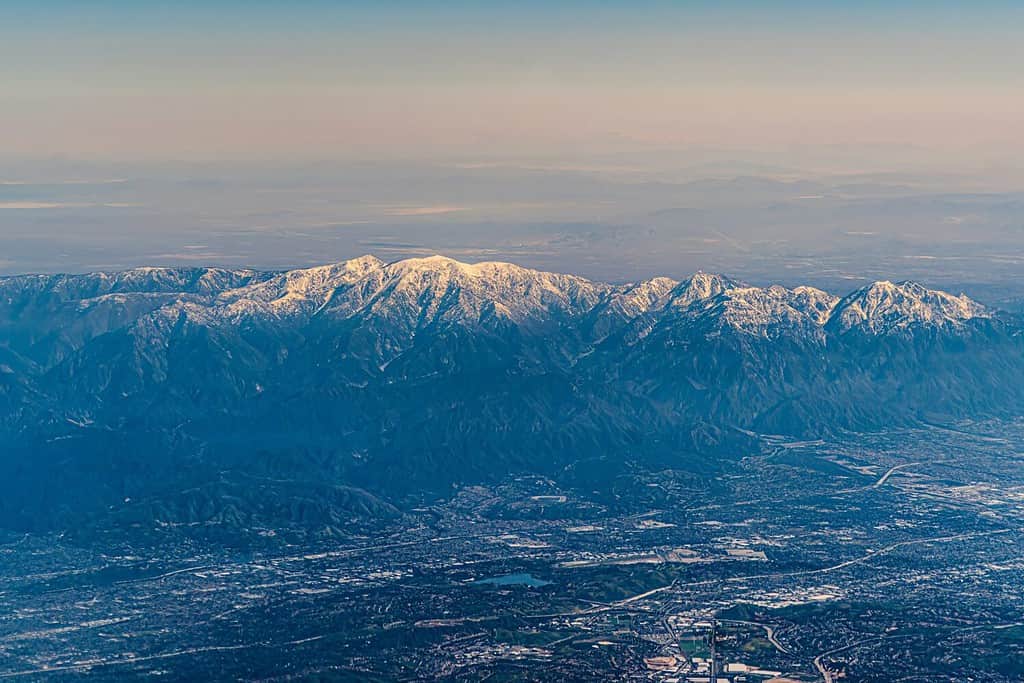San Bernardino is a city with a rich history and a vibrant present that lies in the San Bernardino Mountains in California. Known for its unique geography, historical significance, and diverse population, the city is a memorable home for residents and destination for visitors.
San Bernardino’s Map Location: The Heart of California
San Bernardino is located in California, one of the most geographically diverse states in the United States. Being a part of the southern part of the state, the city is part of the Inland Empire region, which encompasses several cities in Riverside and San Bernardino counties. Its precise geographical coordinates are around 34° N and 117° W.
How Far Is San Bernardino from other Major Cities in California?
To better understand San Bernardino’s location relative to other major cities in California, let’s examine the distances between them.
| City | Distance from San Bernardino (Approx.) |
|---|---|
| Los Angeles | 60 miles |
| Riverside | 13 miles |
| Anaheim | 35 miles |
| San Diego | 100 miles |
| Palm Springs | 47 miles |
| Bakersfield | 140 miles |
| San Francisco | 415 miles |
These distances show that San Bernardino is accessible to other major urban centers, making it a well placed city within Southern California.
Is San Bernardino a Good Place to Live?
When considering whether San Bernardino is a good place to live, it is essential to delve into various aspects of the city’s livability.
1. Affordability
Advantages: San Bernardino has a relatively affordable cost of living compared to many other cities in Southern California. Housing costs, in particular, tend to be more budget-friendly than some other places, making it an attractive option for those looking to establish roots without breaking the bank.
Challenges: While housing affordability is a significant perk, other expenses, such as transportation and healthcare, may be higher than the national average. Prospective residents should carefully consider their overall budget.
2. Employment Opportunities
Advantages: San Bernardino has a diverse economy, with employment opportunities in sectors such as healthcare, education, logistics, and retail. The city’s location within the Inland Empire provides residents access to various job markets in nearby cities.
Challenges: Like many urban areas, San Bernardino has faced economic challenges, including fluctuations in unemployment rates. However, there are several ongoing efforts to revitalize the local economy that aim to create more job opportunities.

San Bernardino is located in the foothills of the San Bernardino Mountains which makes it a good place to live.
©Adrian Michael, CC BY 3.0, via Wikimedia Commons – Original / License
3. Quality of Life
Advantages: San Bernardino’s residents enjoy proximity to natural beauty, including the San Bernardino Mountains and nearby national forests. Residents have access to hikes, skiing spots, and other recreational activities. The city’s diverse population also contributes to a vibrant cultural scene, with festivals, events, and various cuisines celebrated throughout the year.
Challenges: Crime rates can vary within the city, with certain neighborhoods having higher levels of crime than others. However, it’s important to note that safety conditions are not uniform across all areas, like it is in all major cities in the country, and some neighborhoods are also known for being safe.
4. Education
Advantages: San Bernardino is also home to educational institutions like California State University San Bernardino, which contributes to the city’s intellectual identity. Additionally, several public and private schools also serve the local community.
Challenges: In some parts of San Bernardino, there is room for improvement in terms of education. Families with school-age children may consider nearby school districts or explore private education options.
5. Community and Diversity
Advantages: San Bernardino’s population is also culturally diverse, having a rich combination of traditions, languages, and celebrations. The city also hosts numerous cultural events and festivals, fostering a sense of community.
Challenges: As in any diverse community, residents may encounter occasional cultural or language barriers. However, the city’s diverse character is generally celebrated and contributes to its unique identity.
6. Future Prospects
Advantages: The city is actively working on revitalization efforts that are aimed at improving economic conditions, infrastructure, and quality of life. These ongoing initiatives suggest potential for positive changes in the city’s future.
Challenges: The success of revitalization efforts will depend on various factors, including local and regional economic trends and changes in policy.
In conclusion, the city has affordable housing, employment opportunities, and a vibrant cultural scene, making it an appealing choice for many. However, like any urban area, it has its unique challenges, including concerns for safety in certain neighborhoods.
What Is San Bernardino Famous For?
A city steeped in history and home to several notable attractions, there are several factors that have contributed to its fame and cultural significance.

San Bernardino lies along the Historic Route 66, which makes it a significant part of American history.
©gabriel12/Shutterstock.com
1. Historic Route 66
San Bernardino holds a special place in the history of the United States. This is because it was a prominent stop along the iconic Route 66. Often referred to as the “Main Street of America,” Route 66 was one of the original highways within the U.S. Highway System. It connected Chicago, Illinois, to Santa Monica, California, passing through San Bernardino along the way.
2. California State University, San Bernardino
One of the city’s most significant institutions is California State University, San Bernardino (CSUSB). Established in 1965, CSUSB has grown into a respected public university known for its academic excellence, diverse student body, and contributions to the local community. The university has a wide range of undergraduate and graduate programs. It also serves as a hub for cultural and intellectual activities in the region.
3. San Manuel Stadium and Minor League Baseball
San Manuel Stadium, located in San Bernardino, is the home stadium of the Inland Empire 66ers. They are a Minor League baseball team affiliated with the Los Angeles Angels. The stadium provides residents and visitors the opportunity to enjoy America’s favorite pastime in a classic ballpark setting. The 66ers also have a dedicated fan base in the community.
4. McDonald’s Birthplace
San Bernardino also holds a unique place in the history of the fast-food industry. This is because it was the birthplace of the original McDonald’s restaurant. In 1940, Richard and Maurice McDonald opened their first McDonald’s Bar-B-Q restaurant at 1398 North E Street in San Bernardino. The restaurant’s menu and operations have evolved significantly over the decades. However, its humble beginnings in San Bernardino marked a significant shift in the history of fast food.

Man hands fast food bag out the McDonald’s drive-thru window. McDonald’s was born in San Bernardino back in 1940.
©Gargantiopa/Shutterstock.com
5. Mormon Pioneers and Historical Ties
The city also has historical connections to the Mormon pioneers who settled in the region during the mid-19th century. It was once a part of the larger Mormon corridor. The remnants of this heritage can still be seen in various architectural elements and historical sites throughout the city.
6. Multicultural Events and Festivals
The city’s diverse population also contributes to a vibrant cultural scene. Throughout the year, the city hosts a variety of multicultural events and festivals that celebrate the traditions and cuisines of its residents. These festivities provide an opportunity for residents and visitors to explore different cultures and enjoy a diverse array of foods, music, and art.
7. Vibrant Arts and Music Scene
The city’s arts and music scene continues to grow. Various art galleries, music venues, and cultural events showcase the creative talents of the city’s residents and provide opportunities for artistic expression and appreciation.
8. Gateway to Natural Beauty
The city’s proximity to the San Bernardino Mountains and nearby national forests makes it a gateway to explore natural beauty and have outdoor adventures. The city is a starting point for several trails for hiking, camping spots, as well as exploring the stunning landscapes of the region including the picturesque Big Bear Lake and Lake Arrowhead.
These aspects of the city’s significance reflect its historical contributions, cultural diversity, educational excellence, as well as its role as a hub for both sports and the arts.
The Geography of San Bernardino
San Bernardino’s geography has diverse topography, including mountains, valleys, and nearby desert regions.

Aerial view of San Bernardino Mountain and San Gorgonio Mountain. The city lies just at the base of these mountains.
©photos4uuuu/Shutterstock.com
San Bernardino Mountains
Prominent Peaks: The San Bernardino Mountains are a prominent geographical feature to the north of the city. These mountains are part of the Transverse Ranges and include notable peaks such as San Gorgonio Mountain, the highest peak in Southern California, and Mount San Bernardino.
Outdoor Recreation: The San Bernardino Mountains have several activities for those who like to explore the outdoors. Visitors can explore numerous hiking trails, campgrounds, and lakes within this picturesque mountain range. As mentioned earlier, popular destinations include Big Bear Lake, Lake Arrowhead, and the San Gorgonio Wilderness.
San Bernardino Valley
Valley Location: The city is situated within the San Bernardino Valley, which extends to the south and east. This valley is surrounded by mountain ranges, including the San Bernardino Mountains to the north and the San Gabriel Mountains to the south.
Urban Center: The valley floor is also home to the city’s urban core, where most of the city’s population resides. This region includes residential neighborhoods, commercial areas, and cultural institutions.
Cajon Pass
Mountain Pass: To the northwest of the city lies Cajon Pass, a significant mountain pass in Southern California. Cajon Pass is a vital transportation corridor between the San Bernardino Valley and the Mojave Desert.
Transportation Hub: The pass also contains Interstate 15 and the Union Pacific Railroad, making it a crucial transportation hub for the movement of goods and people. This is where most of the ground transport goes in and out of Southern California. Therefore, it plays a pivotal role in connecting Southern California to the rest of the country.
Elevation in San Bernardino
San Bernardino’s elevation varies across its different geographical features:
Mountain Peaks: The San Bernardino Mountains reach impressive elevations, with San Gorgonio Mountain reaching 11,503 feet (3,506 meters) above sea level and other peaks exceeding 10,000 feet (3,048 meters).
Valley Floor: The city itself is situated at an elevation that typically ranges from about 1,000 to 2,000 feet (305 to 610 meters) above sea level, depending on the specific location within the valley.
Cajon Pass: Cajon Pass has a relatively low point in the mountainous terrain, with an elevation of approximately 3,777 feet (1,151 meters) above sea level.

Cajon Pass, on Route 66, in the Angeles National Forest, California.
©SteveLagreca/iStock via Getty Images
Flora and Fauna
The diverse topography and elevation variations in the city contribute to a wide range of flora and fauna:
Flora
The higher elevations of the San Bernardino Mountains are home to coniferous forests, including pine, fir, and cedar trees. These forests provide habitat for various wildlife species. The valley floor features a mix of native and cultivated plants, including Joshua trees, cacti, and a variety of shrubs. The city’s parks and green spaces also have diverse ornamental plants.
Fauna
The city’s varied landscape supports a diverse range of wildlife, from deer and black bears in the mountains to coyotes, bobcats, and numerous bird species in the valley. Lakes and streams in the mountains create habitat for trout and other freshwater fish species. Meanwhile, the valley is home to many aquatic reptiles.
Within the city, residents may encounter smaller urban wildlife, such as raccoons, squirrels, and a variety of bird species.
Climate in San Bernardino
The city’s climate is classified as Mediterranean, often associated with mild, wet winters and hot, dry summers. This Mediterranean climate, which is prevalent in many parts of California, has distinct characteristics that shape the city’s weather patterns and seasons.
Seasonal Temperature Variations
San Bernardino experiences long, hot summers characterized by high temperatures. Average daytime highs during this period can range from the 90s-100s˚F (32-40°C). Heatwaves are not uncommon, and residents often rely on air conditioning and other cooling measures to stay comfortable.
Fall brings relief from the summer heat, with gradually declining temperatures. Highs range from the 70s-80s˚F (21-32°C), providing a pleasant environment for outdoor activities as well as exploration.
Luckily, winters in San Bernardino are mild compared to many other parts of the country. Daytime temperatures typically hover in the 50s-60s˚F (10-21°C). Frost and freezing temperatures are rare in the city itself, but nearby mountain areas may receive snowfall.
Spring is a delightful season in the city. Temperatures steadily rise from the 60s-80s˚F (15-32°C), making it an ideal time for outdoor activities and cultural events.
Rainfall Patterns
San Bernardino’s Mediterranean climate also exhibits distinct rainfall patterns.
The majority of San Bernardino’s annual precipitation occurs during the winter months, primarily from November to April. Winter storms, influenced by the moisture from the Pacific Ocean, bring rainfall to the region. This is a crucial period for replenishing water resources and supporting local vegetation.
The summer and early fall months are exceptionally dry in San Bernardino. Rainfall becomes scarce, and the city experiences drought conditions. Water conservation measures are often implemented to manage water resources efficiently. Due to the prevalence of dry brush and vegetation, wildfires are also pretty common during this season.
Influence of Mediterranean Climate on Lifestyle
The Mediterranean climate of the city has a significant impact on the lifestyle and culture of its residents and Southern California as a whole. Residents and visitors can engage in a lot of outdoor activities, including hiking, cycling, and exploring the city’s parks and natural beauty throughout the year. The region’s agriculture also benefits from the climate. This is because citrus fruits, avocados, and vineyards thrive in this area and this weather.
However, the Mediterranean climate also presents challenges, particularly when it comes to water resources. Droughts are recurring concerns in San Bernardino and the broader region and therefore, water conservation is a necessity. Sustainable water management practices are necessary to reduce water consumption and it is essential to ensure a reliable water supply for the people.
Thank you for reading! Have some feedback for us? Contact the AZ Animals editorial team.








